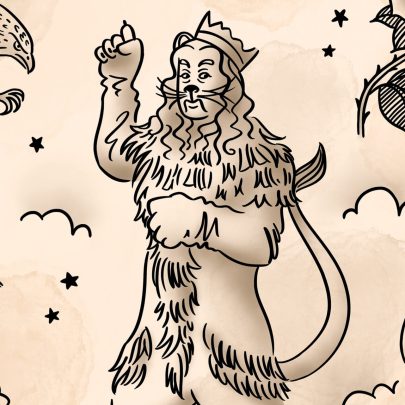Jun 17, 2016 Theatre
The Magic Flute has in the past defeated my efforts to do this, precisely because the music is so easy to enjoy, and gives the repression of all things female the authority of the sublime. The Queen of the Night’s second aria is one of the greatest songs ever written. It’s also a vicious woman instructing her daughter to murder a kind, wise man or be disowned. What I particularly love in Sara Brodie’s new production is the wit with which the opening scene undermines male authority.
Our handsome young prince, Tamino, usually runs on stage pursued by a terrible serpent. Here he starts the opera asleep in bed. The terrible serpent is writhing around under the sheets. Much audience hilarity. Three warrior maidens enter to slay the serpent – which, when it finally pokes its head out, is a very nice piece of puppetry. (The production features several). Tamino sleeps on until the maidens wake him.
It’s wicked, it’s funny, and it lets the opera be itself without requiring us to take it seriously: a brilliant stroke, representative of this production’s clever balance of tradition and modernity.
The entire opera, thus framed, may be a young man’s queasy erotic dream. It’s wicked, it’s funny, and it lets the opera be itself without requiring us to take it seriously: a brilliant stroke, and representative of this production’s clever balance of tradition and modernity. It helps that Brodie has opted for a modern English libretto translation from Scottish writer Kit Hesketh-Harvey, full of hilarious doggerel. (The surtitle screen is still there for anyone who needs it.)
Pamina, princess of Tamino’s possibly-just-a-dream, is not the opera’s greatest role, but Emma Fraser gives her this production’s great voice, pure, rich and perfect. She’s a joy to listen to. Ruth Jenkins-Róbertsson is very good in the no-harder-test role of the Queen of the Night, without always being quite good enough: her second aria, especially, feels effortful where it should feel most effortless. Wade Kernot’s Sorastro matches the Queen precisely, with a glorious strong bass that falters badly in its crucial bottom half-octave. Randall Bills is a solid presence as Tamino, and Samuel Dundas combines a nice voice with a good comic presence in the key role of Papageno.
Visually the production is a treat. The sound-reflective power of the sloped stage is probably one reason all the voices project so clearly and well – it’s the first opera I’ve been to at the cavernous Aotea Centre where every syllable from every last singer is easy to hear. It also helps show off John Verryt’s elegant and versatile set. The framing of Tamino’s final ordeal, in the second act, is particularly striking, with a balanced visual composition worthy of a Renaissance master.
The Magic Flute, NZ Opera and Auckland Philharmonia Orchestra, Aotea Centre, until June 26. nzopera.com
Photo by Marty Melville.





